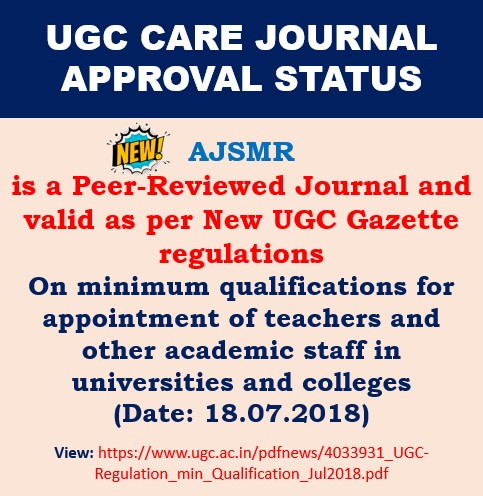Original Research Article I Volume 5 I Issue 1 I 2019
Temperature stress on biochemical constituents in Barytelphusa guerini
Pandari Reddy P and Sunitha Devi G
The American Journal of Science and Medical Research; 5(1); 6-9
DOI:http://dx.doi.org/10.17812/ajsmr512
Abstract:
The present investigation emphasizes on the variations in the levels of biochemical constituents on exposure to varying water temperatures in fresh water crab, Barytelphusa guerini. The crabs were divided into three experimental groups consisting of six crabs each for stress treatments and the crabs were maintained at the temperature (26 0C) which served as the control.Group-I: This experimental group was exposed to 22 0C for two hours. It referred to as a cold condition. Group-II: This experimental group was exposed to 26 0C for two hours. It referred as a normal condition. Group-III: This experimental group was exposed to 30 0C for two hours. The influence of temperature on tissue (muscle & hepatopancreas) protein, carbohydrate metabolites of crabs were shown to be changed. Higher temperature of 30 °C was found to have pronounce effect on the protein levels. Minor variations in the level of carbohydrates were observed under warm and cold stress. In the present investigation, the altered results obtained were demonstrated that the high and low temperatures influenced biological responses of Barytelphusa guerini and modulated its biochemical parameters (protein, carbohydrates) in order to cope with temperature.
Keywords:
Barytelphusa guerini, Temperature, Protein, Carbohydrate, Muscle and Hepatopancreas
References:
1. Landau M, Introduction to aquaculture. John Wiley & Sons, New York, USA 1992.
2. Brown P, Wilson K, Wetzel J, Mays J, Binkowski F, Yeo S. Culture characteristics of juvenile yellow perch (Perca flavescens) from different geographical locales grown at three temperatures. World Aquaculture ´94, Book of Abstracts 1994.
3. Berger MS, Emlet RB. Heat-shock response of the upper Inter tidal barnacle, Balanus glandula: Thermal Stress and acclimation. Biol. Bull., 2007. 212: 232 – 241.
4. Shelford VE. Some concepts of bioecology. Ecol., 1931. 12: 455 – 467.
5. Kulkarni GK, Nagabhushanam R. Thermal acclimation induced compensation in biochemical constituents of the Indian freshwater leech, Poecilobdella viridis (Blssanchard). Hydrobiol. 1978. 58(1): 3 – 6.
6. Krishnamoorthy RV, Lakshmi GJ, Biesiot P, Venkataramiah A. Variations in glycogen, total fat and caloric enegies of the American oyster, Crassostrea virginica (Gmelin) from natural reefs in the Mississippi Sound. Proc. Indian Acad. Sci., 1979. 88B Part I (6): 397 – 409.
7. Bonthu S. Metabolic response and physiological functions of tje haemocyanin in O. senex senex and P. globosa during thermal stress. Ph. D. Thesis, Sri Venkateswara University, Tirupati, A.P. India 1995.
8. Hochachka PW, Somero GN. Temperature. In: Strategies of biochemical adaptation. Saunders, Philadelphia. pp. 1973. 179 – 270.
9. Rao KP. Some aspects of the biochemical basis of metabolic adaptation. Helgoland Mar. Res., 1966. 14(1-4): 439 – 450.
10. Lang F, Busch G L, Ritter M, Völkl H, Waldegger S, Gulbins E, Häussinger D. Functional significance of cell volume regulatory mechanisms. Physiol. Rev., 1998. 78: 247 – 306.
Article Dates:
Received: 29 December 2018 ; Accepted: 2 February 2019 ; Published: 12 February 2019
How To Cite:
http://dx.doi.org/10.17812/ajsmr512 Received :29 December, 2018 Accepted; 2February, 2019 Available online :12 February, 2019



